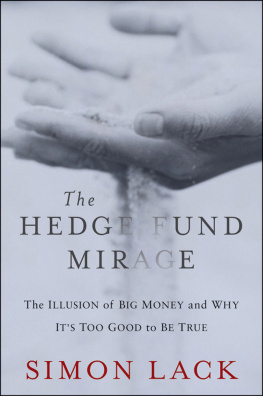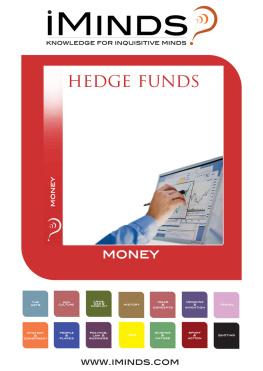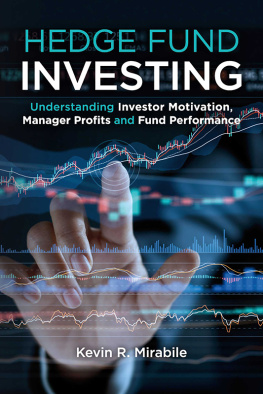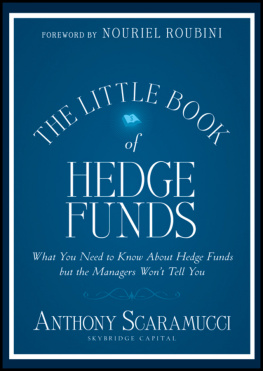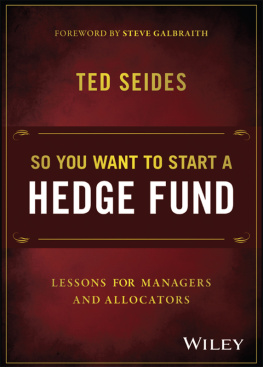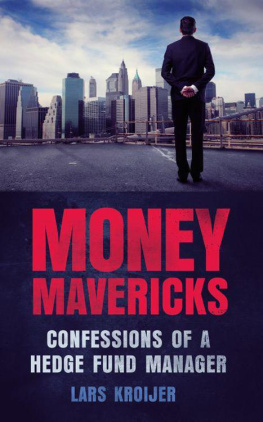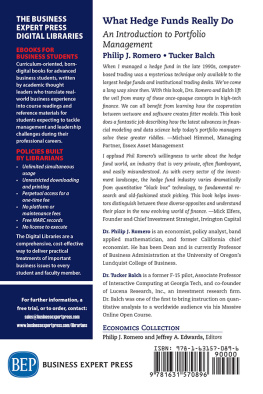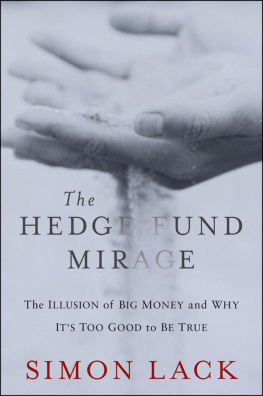Simon Lack spent 23 years with JPMorgan before retiring to manage his own money in 2009. Much of his career with JPMorgan was spent in North American Fixed Income Derivatives and Forward FX trading, a business that he ran successfully through several bank mergers and numerous economic cycles.
He sat on JPMorgans investment committee, allocating more than $1 billion to hedge fund managers and founded the JPMorgan Incubator Funds, two private-equity vehicles that took economic stakes in emerging hedge fund managers.
Simon now runs SL Advisors, LLC, an investment firm he founded in 2009, where he manages money for himself and clients in a variety of strategies. Simon serves on the Board of Trustees of Wardlaw-Hartridge School in Edison, New Jersey, where he chairs the Investment Committee, and also chairs the Memorial Endowment Trust Investment Committee of St. Pauls Church in Westfield, New Jersey. Simon is a CFA Charterholder. He grew up in the United Kingdom and moved to the United States in 1982. He lives in Westfield, New Jersey, with his wife and three children.
Afterword
Having spent many years in the hedge fund industry, its been interesting to note the reaction of my peers as they learned I was writing this book. When confronted with the central theme, that hedge fund investors would have been better off in Treasury bills, few industry insiders are shocked. In fact, Ive found people respond in one of two ways. Most are unsurprised because if you work in the hedge fund industry you dont need to do the math that Ive shown in this book to have an intuitive sense of how things have played out. More revealingly, a few others expressed genuine dismay that a tell-all book was being written. A cynic might conclude that this response reflected concern about highlighting past inequities and how this might upset a very comfortable business model. A more charitable conclusion is simply that nobody likes to see their industry trashed.
My hope is that this book will provoke a debate amongst investors, their advisers including funds of hedge funds, and hedge fund managers themselves. Not about the investment results thoughtheres no point in debating the numbers. Selecting different indices to reflect hedge fund returns or different measures of assets under management (AUM) will produce outcomes that are different but not substantively so. When I first took the time in 2010 to calculate the industrys internal rate of return (IRR) and saw my own intuition confirmed with the numerical results before me, I was amazed that nobody had done this before. Soon I came across the research paper written by Dichev and Yu (referred to in Chapter 1) which confirmed my own analysis in a thorough and robust fashion. Their results were already out in the public domain having been published in 2009, and yet few people seemed to have noticed. I found this incredible, and I contacted Ilia Dichev in 2010 to discuss his research. I thought his paper was a bombshell, a wake-up call to every hedge fund investor out there. The fact that it had received little attention probably reflected equanimity among those industry professionals who had read it. Just like the initial response of many insiders to the topic of this book, they werent surprised; even more reason for investors to take notice.
Ilia Dichev described the overall response to his paper as moderate. He speculated that it was because the message is a bit of a downer. While thats probably true, I also think that since IRR is not widely used in analyzing hedge funds the enormous difference between traditionally calculated results based on average annual returns and the asset-weighted results that reflect how investors have really done are not readily apparent. Although few hedge fund professionals have expressed surprise to me at these results, most outside the industry are quite taken aback. Ive discussed this with people who have a reasonably sophisticated knowledge of investing but are not directly involved in hedge funds, and like most of us they assume fabulously wealthy hedge fund managers are the result of similarly successful clients. This illustrates a huge misconception in popular opinion, and highlights the need for some changes. If this book serves as a catalyst for needed debate, it will have more than served its purpose.
The questions the industry should ask itself include:
- Why have overall results for clients been so poor?
- What is an appropriate fee model that is fair for clients but appropriately rewards high-decile investment performance?
- What rights over transparency, liquidity, and governance should investors demand for their hedge fund investments?
- Are these results likely to persist in the future?
These issues are worth examining, because its not as if hedge funds havent made money. They just havent passed those profits back to their investors. Theres no shortage of immense investment talent available, although theres almost certainly too much capital in hedge funds today for the available opportunity set.
As with so many products in finance, part of the problem is that theres no obvious business model to profit from a negative view (after all, its not easy to short hedge funds). Theres an entire industry, including hedge funds of funds, prime brokers, consultants, and others whose central purpose is to channel assets to hedge funds. And economies of scale dictate at every step that the larger funds will be favored. Theres little demand for consultants or advisers who profess skepticism, and no doubt those individuals who do simply make their careers elsewhere.
This book began as an essay in AR published in November 2010 (Hedge fund IRR has been pathetic). While the title was more biting than I might have chosen, it did draw attention and subsequent discussions convinced me I had a story that hadnt yet been told. I started out believing the villains were the hedge fund managers and all the advisers who had channelled substantially too much capital to them. But my view shifted as I researched the book, and if there is a fault it lies squarely with many supposedly sophisticated investors who have applied far less critical analysis and cynicism to their allocation decisions. An industry has developed to meet demand, and the buyers have freely agreed to pay high prices for often mediocre results.
Saying hedge funds have been a bad investment for many should not be confused with saying theyre all bad, or that nobody has made money. There are many supremely talented hedge fund managers who have provided enormous value to their astute clients, and there are many highly successful clients of hedge funds. That will most likely always be the case. I know numerous people who are extremely happy with their investments. A hedge fund is the most lucrative asset-management business around and will continue to draw the very best talent. Some investors will always beat the averages, and demonstrate an ability to select high-decile managers before their returns deteriorate. But winning investors and value-providing hedge funds are not typical of the whole industry, and its doubtful that will change at anything like its current size.
The importance of manager selection was noted in Chapter 9. Since earning the average return on a hedge fund portfolio hasnt beaten Treasury bills its safe to say that picking the right managers is indispensable for success. Average manager selection ability renders a hedge fund portfolio pointless. This should play well to allocators and consultants, since an important element of their value proposition is that they are good at picking tomorrows winners. Of course many of them are, but its worth noting just how difficult that is, and not just because we cant all be above average.
Using the BarclayHedge database of hedge fund returns and AUM provides some measure of the challenge. Their database covers around a third of the industry by AUM, so it represents a fairly good sample. It includes more than 3,300 funds in total for whatever period of time theyve reported, including many that have closed down. Like all hedge fund databases it suffers from the fact that managers report voluntarily, creating the survivor bias shortcoming in that poorly performing funds are generally not included and so returns in total are somewhat overstated. Analyzing the results beginning in 1994, if an investor could select funds that were at the sixtieth percentile or higher (i.e., better than 60 percent of all funds) he would have gained an additional 3.7 percent in annual performance compared with the asset-weighted average. This could be enough to make his hedge fund portfolio worthwhile. Only 40 percent of the industry by AUM is typically this good in any one year, but thats still a sizeable selection to choose from.

